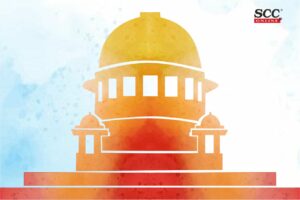Supreme Court: In the case where two petitioners had encroached upon the Panchayat land and had constructed houses on it, the bench of Dr. DY Chandrachud and MR Shah*, JJ has held,
“The persons in illegal occupation of the Government Land/Panchayat Land cannot, as a matter of right, claim regularization. Regularization of the illegal occupation of the Government Land/Panchayat Land can only be as per the policy of the State Government and the conditions stipulated in the Rules. If it is found that the conditions stipulated for regularisation have not been fulfilled, such persons in illegal occupation of the Government Land/Panchayat Land are not entitled to regularization.”
Background
In the present case, the lands on which the petitioners had constructed the houses vested in the Gram Panchayat. In the year 2000, the Government of Haryana framed a policy regarding sale of panchayat land in unauthorised possession inside outside the Abadi Deh and also amended the Punjab Village Common Lands (Regulation) Rules, 1964 and issued a notification dated 1.8.2001 in this regard. Thereafter, in 2008, Rule 12(4) was incorporated in the 1964 Rules in terms of the notification dated 03.01.2008, which authorises Gram Panchayat to sell its non-cultivable land in Shamlat Deh to the inhabitants of the village who have constructed their houses on or before 31.03.2000, subject to fulfilment of the conditions mentioned in Rule 12(4) of the 1964 Rules.
The competent authority after giving an opportunity of personal hearing to the writ petitioners and on perusal of the record and the site report which was verified by visiting the relevant place found that petitioner no.1 – Joginder was in illegal occupation of the area admeasuring 757.37 square yards and petitioner no.2 -Karamveer was found to be in illegal occupation of the area admeasuring 239.48 square yards, rejected the prayer of the petitioners to sell the land in exercise of powers under Rule 12(4) of the 1964 Rules.
Analysis
As per Rule 12(4) of the 1964 Rules,
- the construction of the house on the panchayat land must have been put on or before 31.03.2000.
- it must be a non-cultivable land;
- does not result in any obstruction to the traffic and passer¬by and
- the illegal occupation/constructed area shall be up to a maximum of 200 square yards and then only the same can be regularised/sold.
The illegal occupation of the panchayat land can be regularised provided the area of the illegal occupation is up to a maximum of 200 square yards. It includes the constructed area, open space up to 25% of the constructed area or appurtenant area.
Therefore, on a fair reading of Rule 12(4), in case of an illegal occupation of the area up to a maximum of 200 square yards including the constructed area, appurtenant area and open space area can be regularised and sold at not less than collector rate (floor rate or market rate, whichever is higher).
“The idea behind keeping the cap of 200 square yards may be that the small area of the lands occupied illegally can be regularised/sold.”
If it is held otherwise, in that case, it may happen that somebody has put up a construction on 195 square yards and is in illegal occupation of 500 square yards area, in that case, though he has encroached upon the total area of about 700 square yards, he shall be entitled to purchase the land under Rule 12(4) of the 1964 Rules, which is not the intention of Rule 12(4).
In the present case, the policy which was formulated by the State Government which culminated in Rule 12(4) of the 1964 Rules specifically contained a stipulation to the effect that the illegal/unauthorised occupation up to a maximum of 200 square yards only can be sold on regularisation and on fulfilment of other conditions mentioned in Rule 12(4) of the 1964 Rules. The petitioners were found to be in illegal occupation of the area of more than 200 square yards.
Therefore, one of the conditions mentioned in Rule 12(4) is not satisfied and therefore both, the competent authority as well as the High Court have rightly held that the petitioners are not entitled to the benefit of the provisions of Rule 12(4) of the 1964 Rules.
[Joginder v. State of Haryana, 2021 SCC OnLine SC 59, decided on 05.02.2021]
*Judgment by: Justice MR Shah

